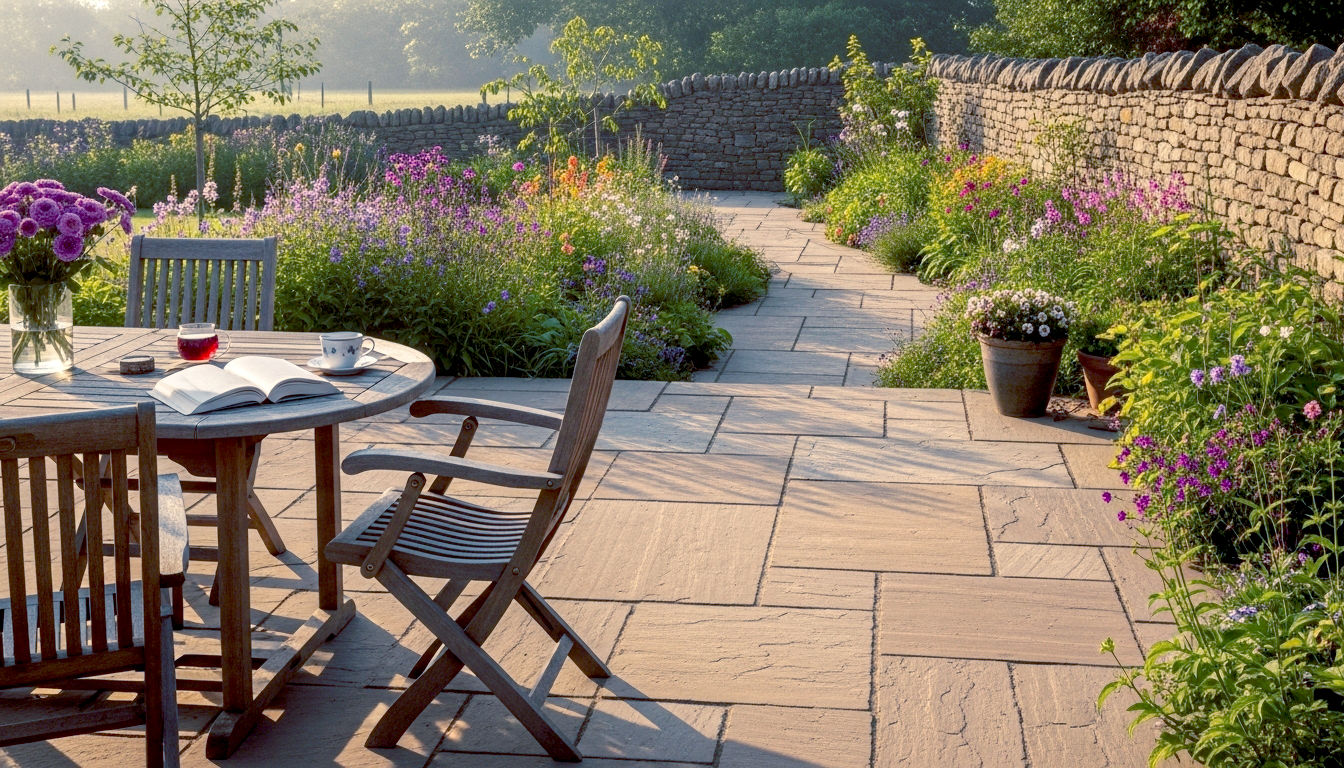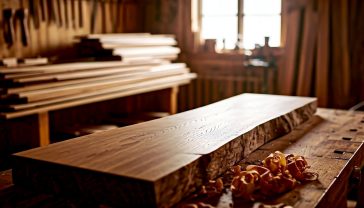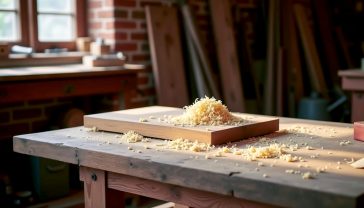From Cotswold Charm to Contemporary Chic: The Guide to Natural Stone Landscaping in Britain
Discover everything you need to know about natural stone landscaping in Britain. This complete guide covers stone types, design ideas, and practical tips.

This post may contain affiliate links. If you make a purchase through these links, we may earn a commission at no additional cost to you.
Ever walked through a classic English country garden and felt that sense of timeless beauty? Chances are, you were admiring the magic of natural stone. It’s the stuff of ancient cathedrals, winding village lanes, and those picture-perfect patios we all dream of. But natural stone landscaping isn’t just for grand estates or historical landmarks. It’s a wonderfully versatile, durable, and sustainable way to bring character and structure to any British garden, whether you’ve got a sprawling lawn in the home counties or a tiny urban courtyard in Manchester.
For centuries, we Brits have been quarrying stone from our own landscapes—from the honey-coloured Cotswold limestone to the rugged slate of Wales and the hardy granite of Scotland. This connection to our local geology is what makes natural stone feel so right in our gardens. It’s more than just a building material; it’s a piece of the British Isles, shaped by millions of years of history, waiting to tell a story in your back garden.
But where do you even start? The world of natural stone can seem a bit overwhelming. You hear terms like sandstone, limestone, granite, and slate, but what’s the difference? How do you choose the right one for a path that won’t get slippery in the endless British drizzle? How do you build a dry-stone wall that looks like it’s been there for generations?
Don’t worry. This guide is here to demystify it all. We’ll take you on a journey through the quarries of Britain and beyond, exploring everything you need to know about natural stone landscaping. We’ll dig into the different types of stone, their unique personalities, and how to use them to create stunning features—from elegant patios and rustic paths to sturdy retaining walls and charming water features. We’ll cover the practical stuff, too, like how to lay a patio that lasts, the importance of proper drainage (a must in our climate!), and how to care for your stone so it looks beautiful for decades to come. Think of this as your complete handbook for transforming your outdoor space with the enduring beauty of natural stone.
What Exactly Is Natural Stone Landscaping?
At its heart, natural stone landscaping is simply the art of using stone that’s been quarried directly from the earth to design and build garden features. Unlike man-made materials like concrete paving slabs or porcelain tiles, which are manufactured in a factory, natural stone is… well, natural. Each piece is completely unique, with its own distinct colours, textures, and patterns—a bit like a fingerprint from Mother Nature.
Think about the beautiful stone walls of the Yorkshire Dales or the iconic flagstones of a Cambridge college courtyard. These were made from stone pulled from the ground nearby. This is the essence of it: using a material that has a genuine connection to the landscape.
But it’s not just about looks. Natural stone has some serious practical advantages.
- It’s incredibly durable. Stone has weathered ice ages, so it can certainly handle a British winter (or five hundred). It resists frost, won’t fade in the sun like some artificial materials, and can withstand heavy foot traffic, making it perfect for patios, paths, and driveways.
- It’s sustainable. When sourced responsibly from local quarries, natural stone has a lower carbon footprint than many manufactured alternatives. It doesn’t require the intense energy needed to produce concrete or ceramics, and because it lasts so long, you won’t need to replace it.
- It’s beautifully versatile. The sheer variety of natural stone is staggering. You can find stone in almost any colour, from the cool greys of slate to the warm, earthy tones of sandstone. You can get it in neat, sawn slabs for a sleek, modern look, or as rough, irregular pieces for a more rustic, cottage-garden feel. This versatility means it can fit into any garden style, from a formal parterre to a wildflower meadow.
- It ages gracefully. Unlike concrete that can crack and look tired, natural stone actually gets better with age. It develops a ‘patina’—a soft, weathered look that helps it blend beautifully into the garden. Mosses and lichens might start to grow on it, adding to its natural charm and making it feel like it’s always been there.
So, in a nutshell, natural stone landscaping is about using a real, authentic material to create garden features that are not only beautiful and long-lasting but also have a deep connection to the natural world. It’s about building gardens with soul.
A Stroll Through British Stone History
Using stone to shape our landscape is nothing new in Britain; it’s a practice that’s as old as the hills themselves. Our ancestors were the original natural stone landscapers, and their work can still be seen all over the country.
Our journey starts in the Neolithic period. Think of the great stone circles of Stonehenge and Avebury. These ancient monuments, built around 5,000 years ago, are perhaps the most dramatic examples of early stone landscaping in the world. The people who built them quarried and moved massive stones—some weighing over 40 tonnes—over huge distances. They used sarsen stones from the nearby Marlborough Downs and smaller bluestones brought all the way from the Preseli Hills in Wales, over 150 miles away. It was an incredible feat of engineering, showing a deep understanding of stone and its symbolic power.
Fast forward to the Roman invasion in 43 AD. The Romans were master builders and engineers, and they brought their sophisticated quarrying and stone-working techniques to Britain. They built an incredible network of straight, durable roads, many of which were paved with local stone and still form the basis of our modern road system. They also built grand villas with intricate mosaic floors and impressive forts like Hadrian’s Wall. Stretching 73 miles across the north of England, this mighty barrier was built from millions of cubic feet of whinstone and sandstone, a testament to Roman ambition and their skill with natural materials.
After the Romans left, the Anglo-Saxons and Vikings continued to build with stone, though often on a smaller scale. But it was the Normans, after their conquest in 1066, who really kicked off a golden age of stone construction. They built hundreds of imposing castles and cathedrals across the land, like the Tower of London and Durham Cathedral. These buildings were powerful symbols of Norman dominance, designed to stand for centuries. The stone was often quarried locally, giving these structures a deep connection to their region.
Throughout the medieval period and into the Tudor and Stuart eras, stone remained the go-to material for important buildings. But it was also used in more humble ways. Across the country, particularly in upland areas like the Cotswolds, the Peak District, and the Yorkshire Dales, a unique style of landscaping emerged: the dry-stone wall. Farmers cleared their fields of loose stone and used it to build thousands of miles of boundary walls. These walls, built without any mortar to hold them together, are a masterclass in skill and ingenuity. They are a defining feature of the British countryside and a beautiful example of practical, sustainable landscaping.
The 18th and 19th centuries saw the rise of the great landscape garden movement, led by designers like Lancelot ‘Capability’ Brown. While Brown was famous for his sweeping lawns and natural-looking lakes, he also used stone to create features like bridges, grottoes (ornamental caves), and ha-has (sunken walls that kept livestock out without interrupting the view). At the same time, the Industrial Revolution drove a massive expansion of quarrying to provide stone for the booming cities. Victorian engineers used granite and sandstone to build the bridges, viaducts, and canals that powered the nation.
Today, we are the inheritors of this rich tradition. While we now have access to stones from all over the world, there’s a growing appreciation for using local British stone. It connects our gardens to this long and fascinating history, allowing us to build spaces that are not only beautiful but are also woven into the very fabric of our landscape.
The Great British Stone Library: A Guide to Popular Types
Choosing the right stone is the most exciting part of the process. Each type has its own story, its own character, and its own strengths. Think of it like choosing a plant—you need to consider the local conditions, the style you’re going for, and the job it needs to do. Let’s explore some of the most popular choices for British gardens.
Sandstone: The People’s Choice
If natural stone were a pop chart, sandstone would almost always be number one. It’s hugely popular in the UK, and for good reason. It’s relatively soft and easy to work with, comes in a wonderful range of warm colours, and offers great value for money.
- What it is: Sandstone is a sedimentary rock, formed from grains of sand that have been compressed and cemented together over millions of years. Imagine ancient deserts or riverbeds turning to stone.
- The Look: The beauty of sandstone is in its warm, earthy colour palette. You’ll find it in shades of buff, tan, pink, red, and brown. Indian Sandstone is particularly popular and offers a beautiful blend of these colours, often with unique patterns and variations in a single paving pack. For a more classic British feel, look for Yorkstone. This famous sandstone from Yorkshire has been used for centuries to pave the streets of London and is prized for its soft buff and grey tones.
- Best For: Patios and paving are sandstone’s bread and butter. Its slightly gritty, non-slip surface makes it a safe choice for walking on, even when wet. It’s also great for walling and creating features like steps or path edgings.
- Things to Know: Sandstone is porous, which means it can absorb water. This isn’t usually a problem, but it can make it susceptible to green algae and staining in damp, shady spots. It’s a good idea to seal it, especially in high-traffic areas, and give it a gentle clean with a stiff brush every now and then.
Limestone: The Sophisticated Cousin
Limestone offers a more refined and contemporary look than sandstone. It tends to have a smoother, flatter surface and a more consistent colour profile, making it a favourite for sleek, modern garden designs.
- What it is: Like sandstone, limestone is a sedimentary rock. But instead of sand, it’s formed from the calcium-rich shells and skeletons of tiny marine creatures that lived millions of years ago when Britain was under a warm, shallow sea.
- The Look: Limestone typically comes in more subtle, cooler colours—think soft greys, blues, dark charcoals, and creamy beiges. It has a distinctive fine-grained texture, often with visible fossils of ancient sea life embedded in the surface, which adds a fascinating layer of detail. Cotswold Stone, famous for its honey-gold colour, is a type of limestone that gives that region’s villages their iconic charm.
- Best For: Its smooth surface makes it perfect for contemporary patios and indoor-outdoor living spaces where you want a seamless flow. It’s also used for gravels and decorative aggregates that add a crisp, clean finish to paths and borders.
- Things to Know: Some limestones can be sensitive to acids. This means you should avoid using acid-based cleaners on them. Also, the colour of some darker limestones can fade slightly over time with prolonged exposure to sunlight. Like sandstone, sealing is recommended to protect it from stains.
Slate: The Dark and Dramatic One
If you want to make a bold statement, slate is the stone for you. With its deep, dramatic colours and unique layered texture, it brings a real sense of drama and style to a garden.
- What it is: Slate is a metamorphic rock. It started life as a sedimentary rock like shale or mudstone, but was then subjected to intense heat and pressure deep within the earth. This process aligned all the clay minerals into thin layers, which is why slate can be split into smooth, flat sheets.
- The Look: Slate is famous for its dark colours—deep blacks, blues, and rich purples. But you can also find it in beautiful greens and even multi-coloured varieties. Its defining feature is its ‘riven’ surface, which is created when the stone is split along its natural layers. This gives it a lovely, slightly uneven texture. Welsh Slate is world-renowned for its quality and deep blue-black colour.
- Best For: Slate is fantastic for contemporary patios, paths, and water features. The way water runs over its dark surface is truly stunning. It’s also very popular for decorative chippings (known as ‘paddlestones’ or ‘shale’) which are great for mulching beds, creating paths, or topping off pots. Because it’s not very porous, it’s naturally resistant to frost and stains.
- Things to Know: The riven surface can be a little uneven, which is part of its charm. If you prefer a completely flat finish, you can get ‘honed’ slate, which has been ground down to be perfectly smooth. High-quality slate can be more expensive than sandstone or limestone.
Granite: The Tough Guy
When you need a stone that is seriously tough and will last forever, you need granite. It’s one of the hardest natural stones available, making it the ultimate choice for high-traffic areas.
- What it is: Granite is an igneous rock, which means it was formed from molten magma that cooled and solidified deep within the earth’s crust. This slow cooling process allowed large, beautiful crystals to form.
- The Look: Granite has a distinctive speckled appearance, created by the interlocking crystals of minerals like quartz and feldspar. It comes in a range of colours, from silver-grey and black to pinks and reds. Cornish Granite, with its characteristic silver-grey colour, has been used to build everything from lighthouses to the London Embankment.
- Best For: Granite is ideal for driveways, kerb edges, steps, and any area that needs to be incredibly hard-wearing. It’s also great for modern patios. Granite setts (small, block-shaped stones) are a classic choice for creating durable and beautiful cobbled paths and edgings.
- Things to Know: Because it’s so hard, granite can be more difficult and expensive to cut and install. Its strength is also its main selling point—it’s extremely resistant to scratches, stains, and weather damage. It will look as good in fifty years as it does the day it’s laid.
Pebbles, Cobbles, and Boulders: The Finishing Touches
Beyond the big paving slabs, there’s a whole world of smaller stones that can be used to add texture, interest, and detail to your garden.
- Pebbles & Cobbles: These are small, rounded stones that have been smoothed by the action of water in rivers or on beaches. They are perfect for creating decorative mulch in borders, lining ponds, or making beautiful mosaic paths. Scottish Beach Pebbles and flint pebbles are classic choices.
- Gravels & Aggregates: These are small, angular chippings of various types of stone. They are a cost-effective and easy way to create paths, driveways, or seating areas. They provide excellent drainage and create a satisfying crunch underfoot.
- Boulders & Rockery Stone: A large, strategically placed boulder can act as a stunning focal point in a garden. Smaller pieces of rockery stone are essential for building, you guessed it, rockeries, where you can grow alpine plants. Using stone that is local to your area will make these features look incredibly natural.
Designing with Stone: From Practical Patios to Wonderful Walls
Now that you know your stone types, it’s time for the fun part: deciding how to use them. Natural stone can be used to build almost any garden feature you can imagine. Here are some of the most popular applications.
Patios and Terraces: The Heart of the Garden
A patio is often the centre of garden life—it’s where you relax with a cup of tea, eat with family and friends, and enjoy the sunshine. Choosing the right stone is key to creating a space that is both beautiful and functional.
- Style: Think about the style of your house and garden. For a traditional cottage or period property, a sandstone with a riven finish and irregular ‘random’ pattern will look fantastic. For a modern, minimalist home, a sawn limestone or slate laid in a neat, uniform pattern will complement the clean lines of the architecture.
- Size Matters: The size of the paving slabs can have a big impact. Large-format pavers can make a small patio feel bigger and more spacious, while smaller slabs or setts can create a more intricate, detailed look.
- The Pointing: Don’t forget the gaps! The material you use to fill the joints between the slabs is called pointing. A traditional sand and cement mortar is a reliable choice, but modern resin-based jointing compounds are becoming very popular. They are easy to apply, flexible, and help to suppress weeds. The colour of the pointing can also make a difference—a contrasting colour can highlight the shape of the pavers, while a matching colour will create a more seamless look.
Paths and Walkways: Guiding the Journey
Paths do more than just get you from A to B; they guide the eye and create a sense of journey through the garden.
- Formal vs. Informal: A straight path made from neat, sawn pavers will create a very formal feel. For a more relaxed, informal look, consider a winding path made from irregular flagstones with plants spilling over the edges. Stepping stones set into a lawn or a gravel bed are another great way to create a playful, informal route.
- Material Mix: You don’t have to stick to one material. A gravel path with a smart stone edging looks wonderful. Or you could create a path that combines paving slabs with sections of decorative cobbles or pebbles for added texture and interest.
- Practicalities: Make sure your path is wide enough to be comfortable to walk on—at least 60cm for a single person, and 120cm if you want two people to be able to walk side-by-side. Ensure the surface is non-slip, especially in shady areas. Sandstone or granite are excellent choices.
Walls and Retainers: Creating Structure and Levels
Walls are the bones of a garden. They provide structure, create different ‘rooms’, and can solve practical problems like sloping sites.
- Dry-Stone Walling: This ancient technique is a truly beautiful way to build a wall. It requires skill and patience but the result is a wall that is full of character and provides a wonderful habitat for wildlife. It’s perfect for creating rustic retaining walls or boundary walls in a country garden.
- Mortared Walls: For a more formal or structural wall, you’ll need to use mortar. You can use ‘cropped’ stone, which is roughly shaped into blocks, for a traditional look. For a more modern feel, stone ‘cladding’ or ‘veneer’ can be fixed to a concrete block wall to give the appearance of a solid stone wall without the expense.
- Retaining Walls: If your garden is on a slope, retaining walls are essential for creating level areas for patios or lawns. A series of low, terraced walls can be much more attractive than one single high wall. Make sure any retaining wall over a metre high is designed and built properly, as it will have to hold back a lot of weight.
Steps and Level Changes
Steps can be a beautiful feature in their own right. Solid stone steps, made from single, large pieces of stone, have a wonderful sense of permanence. You can also build steps using smaller walling stones for the risers (the vertical part) and paving slabs for the treads (the part you step on). Always ensure the treads have a slight forward slope to allow rainwater to run off.
Water Features: Bringing Sound and Movement
There is something magical about the combination of stone and water. The sound of water trickling over stone is one of the most relaxing sounds in nature.
- Ponds: A pond edged with natural stone boulders and pebbles will look far more natural than one with a bare liner.
- Fountains and Waterfalls: A simple ‘drilled monolith’—a tall, upright stone with a hole drilled through it for water to bubble out of—can make a stunning, low-maintenance water feature for a small garden. For a larger space, a waterfall cascading over rugged slate or granite rocks can create a dramatic focal point.
The Nitty-Gritty: Installation and Maintenance
A beautiful stone feature is only as good as the foundations it’s built on. Proper installation is absolutely crucial to ensure your patio or path lasts for decades without sinking or cracking. While a keen DIYer can tackle a simple gravel path, for larger projects like patios and retaining walls, it’s often wise to call in a professional landscaper.
A Solid Foundation: The Key to Success
The single most important part of any paving project is the sub-base. This is the layer of hardcore material that sits beneath the paving and provides a solid, stable, and free-draining foundation. In the UK, with our often-wet climate and frost-prone winters, you cannot skip this step.
- Excavation: The area needs to be dug out to the correct depth. This will be the thickness of your paving slab, plus a mortar bed (around 40mm), plus the sub-base itself (at least 100mm for a patio, and more for a driveway).
- The Sub-Base: A layer of MOT Type 1 hardcore (a specific grade of crushed stone) is laid down. This needs to be thoroughly compacted using a wacker plate (a vibrating plate compactor that you can hire). This is a noisy, heavy job, but it’s vital. The sub-base should be laid with a slight slope, or ‘fall’, to direct rainwater away from your house. A fall of about 1 in 60 (a 1.6cm drop for every metre of width) is about right.
- The Laying Course: The paving slabs are then laid on a bed of mortar. A ‘full bed’ is essential, meaning the entire underside of the slab is supported by mortar. Simply putting a dab of mortar in each corner (the ‘dot and dab’ method) will create voids underneath, which can lead to the slabs cracking or coming loose over time.
- Jointing: Once the mortar has set, the joints between the slabs are filled. As mentioned earlier, this can be done with a traditional sand and cement mix or a modern resin compound.
Caring for Your Stone
One of the great things about natural stone is that it’s relatively low-maintenance. It’s designed to live outdoors! But a little bit of care will keep it looking its best.
- Regular Sweeping: Simply brushing your patio regularly with a stiff broom will stop dirt and leaves from building up.
- Cleaning: For a more thorough clean, a bucket of warm soapy water and a good scrub is usually all that’s needed. Avoid using acid-based cleaners, as they can damage limestone and sandstone. And be very careful with pressure washers. While they can be effective, a powerful jet can damage the surface of softer stones and blast out the pointing. If you do use one, use a fan setting and keep the nozzle moving.
- Sealing: Applying a stone sealer can be a good idea, especially for porous stones like sandstone in areas prone to staining (like under a BBQ). A good quality impregnating sealer will soak into the stone and help to repel water, oil, and dirt without changing the stone’s appearance or making it slippery.
- Embrace the Weathering: Remember that natural stone is meant to age. A bit of weathering and the odd patch of lichen is all part of its charm. It shows the stone is settling into its surroundings and becoming a true part of your garden.
The Future of Stone: Sustainability and Trends
As we all become more conscious of our environmental impact, the way we source and use materials in our gardens is changing. Natural stone, when chosen carefully, can be a highly sustainable option.
The key is to source locally. Buying British stone from a quarry just a few dozen miles away will have a much smaller carbon footprint than buying stone that has been shipped halfway around the world. It also supports local economies and ensures you are using a material that is geologically suited to your region, helping your garden to sit more harmoniously in its landscape.
We’re also seeing some exciting trends in how stone is being used.
- Permeable Paving: To help combat urban flooding, more people are looking at permeable paving solutions. This can involve using gravel, or laying solid stone setts with wider gaps filled with grit, which allows rainwater to soak back into the ground naturally rather than running off into our over-burdened drain systems.
- Gabions: These are wire cages filled with stone. Once used mainly for civil engineering projects, they are now becoming a stylish and cost-effective way to build retaining walls and even garden benches in contemporary garden designs.
- Inside-Out Living: The trend for blurring the lines between house and garden is stronger than ever. Using the same type of stone flooring inside the house and outside on the patio is a brilliant way to create a seamless transition and make both spaces feel larger.
Natural stone landscaping is a wonderful investment. It’s an investment in beauty, in durability, and in the value of your home. But more than that, it’s an investment in creating a garden that feels real, authentic, and timeless. By choosing to use this incredible natural material, you are connecting your own little patch of Britain to the ancient geology that lies beneath our feet and the long history of craftsmanship that has shaped our landscape for thousands of years. You are building a garden not just for a season, but for a lifetime.
Further Reading
For those looking to delve deeper, here are some highly respected resources and suppliers in the UK:
- The Royal Horticultural Society (RHS): A fantastic source of gardening advice, including tips on garden design and construction. https://www.rhs.org.uk
- London Stone: A leading UK supplier of high-quality natural stone paving and features, with excellent technical guides. https://www.londonstone.co.uk
- Marshalls: One of the UK’s best-known manufacturers and suppliers of natural stone and concrete landscaping products. https://www.marshalls.co.uk
- The Dry Stone Walling Association of Great Britain: The home of everything you need to know about the craft of dry stone walling, including courses and registered wallers. https://www.dswa.org.uk
- Geological Society of London: For those interested in the science behind the stones and the geology of the British Isles. https://www.geolsoc.org.uk






